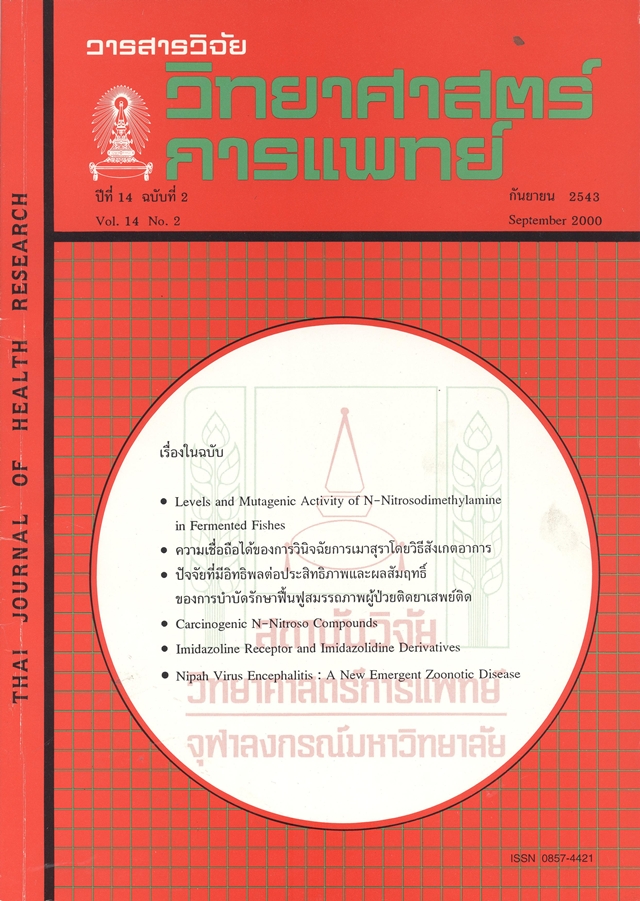Nipah Virus Encephalitis : A New Emergent Zoonotic Disease
Keywords:
Nipah virus, encephalitis, zoonosisAbstract
During late September 1998 to June 1999, an epidemic outbreak of suspected Japanese Encephalitis occured among pig farmers and slaughterhouse workers who directly contacted with infected pigs in Malaysia and Singapore respectively. However, it was found later that the true causative pathogen was a Hendra-like paramyxovirus named Nipah virus. The outbreak was first reported in Kinta, Perak State of Malaysia, but the virus was first isolated from patients living in Sungai Nipah Village, Negri Sembilan State. Totally, over 265 patients were diagnosed including 105 deaths in Malaysia, and 11 cases with one death in Singapore. Most patients had some clinical signs such as fever, headache, dizziness, vomiting and reduced consciousness. The distinctive neurological signs were segmental myoclonus, areflexia and hypotonia, hypertension and tachycardia. Cerebrospinal fluid and serum examinations were positive for Nipah virus. Death was probably due to severe brainstem damage. Modes of transmission remain to be established. Possible natural reservoir may be the fruit bats (Island flying fox). There has still been no specific treatment or drug to cure this disease. Stringent control and prevention by culling infected pigs and routinely monitoring the virus has been imposed in Malaysia and Singapore. In Thailand, there is no report of the outbreak. However, strict measures concerning transfer of pigs across the border and regular surveillance of the disease have been implemented.







